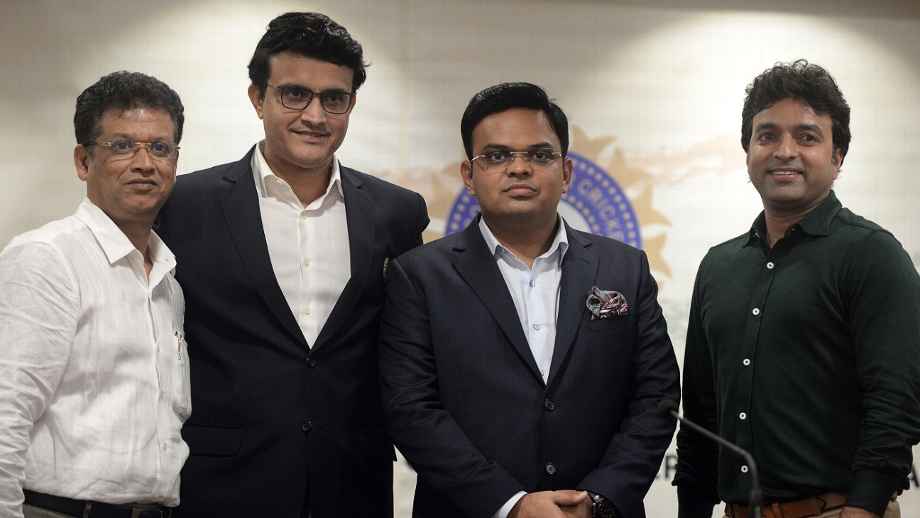BCCI's attempt to amend constitution - A mortification that was always lurking around the corner

When CoA announced the dates for BCCI election, it came as a breath of fresh air as the world’s biggest cricket board was finally going to get a stable administration. Sourav Ganguly’s accentuation to the post of president was the cherry on the cake that people welcomed with open arms.
Even though Amit Shah, India’s Home Minister and until recently the president of Gujarat Cricket Association, had a direct role in selecting the board council members, it was hoped that the current apex council would provide a better deal, and would be freed from feudalism. It was for the simple fact a cricketer can understand the problems that engulfed the sport in general. Ganguly’s successive interviews had an overarching theme of ensuring the betterment of cricket in the country, starting from the grassroots level. It was refreshing that a BCCI president was talking about things that matter.
However, the most important of the observations came out from the BCCI board room was actually on November 9 when the administration proposed several amendments to the board's fresh constitution. The office of Secretary Jay Shah directed a proposed change to the constitution in order to set the stage back to square one by undoing some of the most significant reforms recommended by the RM Lodha Committee back in July 2016, with the entitlement of the officials, ego-based decision-making taking precedence over professional executive-style governance.
During the time of contemplation and delaying tactic, one of the primary facts everyone kept on challenging and often ended up being successful in changing to suit their benefit, was the mandatory cooling-off period when former CJI of India Dipak Mishra was in charge. Now, by trying to do away with all the major reforms, the BCCI has gone back to the times of, as James Astil had described in The Great Tamasha, "an oligarchy”.
Also as a matter of fact, if the secretary becomes the all-powerful person in the BCCI, the board is set to go back to the medieval style of management where entitlement of the officials instead of pure executive style, ego and favouritism would have a bigger role in the public domain. It is archaic and is plain funny because all that had happened had no other initiation than the very basis of lack of accountability.
The Annual General Body Meeting on December 1 will see the proposals put on the table in accordance to make Shah’s position all the more important in the BCCI. If one doesn’t understand it yet, the proposed changes are hardly going to get any opposition in the AGM, thereby getting a bypass so as to secure an imprimatur from the Supreme Court. That, if the Court would further make a hearing on if they actually should be the authority to listen to the amendment plans each and every time, it might bring a halt in BCCI’s plans. But if it gives the verdict in the BCCI’s favour, then it would leave a little room for wriggle. Hey Justice Thakur, Hey Justice Lodha, we are looking at you, mate!
For the Ganguly-backers, it is good news though as it clears the deck for the former Indian skipper to complete a three-year term in office instead of previously-devised nine-month term. This is enough for the BCCI to sway the public behind them but in truth, they care little about who's running things. Once the dust settles and another world event comes close, it doesn’t really matter if Ganguly is running the show or someone else from the Shah-Thakur-Srinivasan family.
This is not an attempt to demean all the band of well-meaning and passionate members of the past whom BCCI owes a lot to for their time and service, which in lieu, helped them build profiles and as in the case of Jagmohan Dalmiya, some well-earned recognition. It was symbolic of the administration that there was continuity in professional management despite the BCCI being an amateur organisation from the very outset.
However, it can never be discredited that it was the cosy-club structure that brought BCCI under the judicial scanner in the first place. By trying to pervade the executives and by amending the constitution to accommodate Srinivasan's desire to own an IPL franchise, things started going worse for the board. Even the stables that were cleaned post-Srinivasan’s ousting as BCCI president was also prompted by cynical circumstances, and not as a byproduct of doing anything good.
As the current administration tries to do the exact thing that many administrations before them did with alacrity, self-preservation is the only word that comes to my mind. Of course, it is different to bring out the same level of enthusiasm in the grassroots cricket if the salaried people are in power because Indian cricket has always flourished under amateurish enthusiasm. That is a discussion until the cows come home, but before that one could just give time to the new system. After all, they have come to power on the back of hopes and turning the back would be a severe betrayal of the system and the cricket-mad public of the country.
